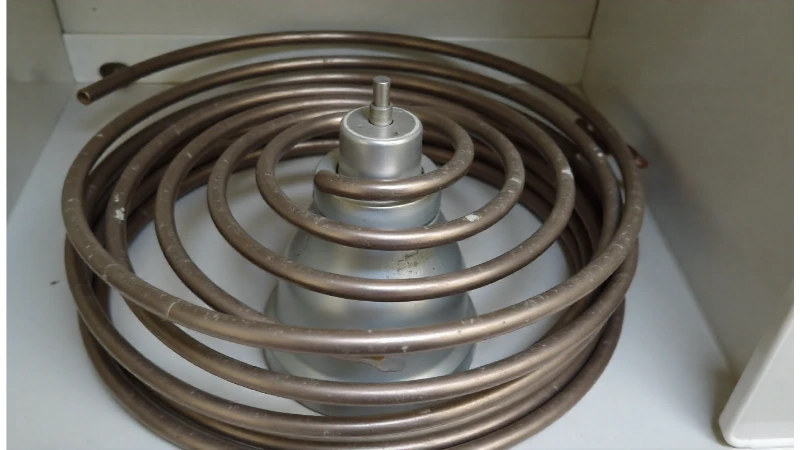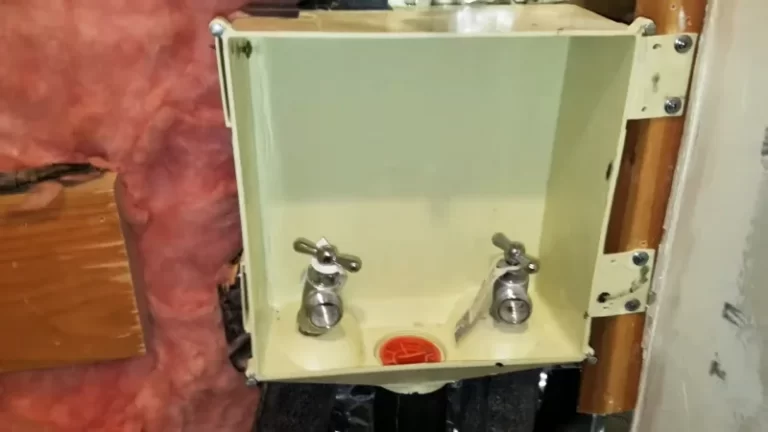New Dryer Heating Element Smell: Is It Normal or a Fire Hazard?
You’ve just replaced the heating element in your dryer, feeling accomplished. You toss in a load of wet clothes, turn it on, and then you notice it: a distinct, slightly alarming smell. Your mind immediately races—did I do something wrong? Is my house about to burn down? Before you panic, know that a new dryer heating element smell is a common and often normal experience. However, it’s crucial to understand why it happens, how long it should last, and when it might signal a genuine problem.
This comprehensive guide will walk you through everything you need to know. We’ll explore the typical causes of that “new element” odor, differentiate between normal smells and warning signs, and provide actionable steps to ensure your dryer operates safely and efficiently. By the end, you’ll be able to confidently determine if that smell is just a temporary phase or a call for immediate attention.
You'll Learn About
Why Your New Dryer Heating Element Has a Smell
That initial burning smell from a new heating element can be unsettling, but it’s usually not a cause for alarm. Several factors contribute to this temporary odor, most of which are a normal part of the manufacturing and installation process.
Factory Coatings and Oils
The most common reason for a smell from a new heating element is the burn-off of protective coatings applied during manufacturing. These oils and residues prevent rust and corrosion while the part is in storage and transit. When you use the dryer for the first time with the new element, these substances are exposed to high heat and vaporize, creating a distinct metallic or chemical odor. This is a temporary and expected phenomenon.
Residual Dust and Debris
During the process of replacing the heating element, it’s easy for dust, lint, and other small particles inside the dryer cabinet to get stirred up. Some of this debris might settle on the new element. When the element heats up, these particles will burn off, contributing to the initial smell. Even with a thorough cleaning, it’s difficult to remove every last speck of dust.
The “Seasoning” Process
Think of the first few cycles with a new heating element as a “seasoning” period. The metal coils need to go through a few heat cycles to burn off any residual manufacturing substances and settle into normal operation. This initial burn-off is a one-time event and is crucial for the element’s longevity and performance. It’s similar to how a new oven might smell the first time you turn it on.

Is the Smell Dangerous? Differentiating Normal from Worrisome
While an initial smell is normal, it’s vital to know the difference between the expected burn-off odor and a smell that indicates a potential hazard. Paying attention to the type of smell, its duration, and any accompanying signs can help you make an informed decision about your dryer’s safety.
What’s a “Normal” Smell?
A normal smell from a new heating element is typically described as a metallic, oily, or slightly chemical odor. It should be most noticeable during the first one to three drying cycles and should gradually fade with each use. Some light, wispy smoke coming from the exterior vent during the very first run is also not uncommon as the coatings burn off. The key is that the smell should diminish over a short period.
Warning Signs to Watch For
If the smell you’re experiencing is accompanied by other symptoms, it’s time to stop using the dryer and investigate. A persistent burning odor can sometimes be a sign of a larger issue, much like when a dishwasher smells like burning metal, which often points to a failing component.
Here are some red flags that indicate a problem beyond the normal burn-off:
- A Strong Electrical or Acrid Plastic Smell: This could indicate an issue with the wiring or that a plastic component is melting. If your stove smells like burning plastic, you’d investigate immediately; the same urgency applies here.
- Visible Smoke Inside the Dryer Drum: While a little smoke from the outside vent is okay initially, thick smoke inside the drum is a major warning sign.
- The Smell Persists or Worsens: If the burning smell doesn’t dissipate after two or three full cycles, or if it gets stronger, turn off and unplug the dryer.
- The Dryer Overheats: If the top of the dryer becomes excessively hot to the touch, it could be a sign of a faulty thermostat or improper installation.
A Step-by-Step Guide to Safely Breaking In Your New Heating Element
To ensure the burn-off process is safe and to minimize the initial odor, follow these simple steps after installing a new heating element. This will help you get through the “seasoning” phase without worry.
Step 1: Perform a Thorough Cleaning Before Installation
Before you even install the new element, take the opportunity to give the inside of your dryer a deep clean. With the panels removed, use a vacuum with a crevice tool to remove as much lint and dust as possible from the dryer cabinet, around the motor, and especially in the housing where the heating element sits. This reduces the amount of debris that can burn off and cause smells.
Step 2: Run an Initial Empty Cycle
Once the new element is installed and the dryer is reassembled, do not put clothes in it right away. Instead, run the dryer on a timed dry setting on high heat for 15-20 minutes. This allows the majority of the factory coatings to burn off without impregnating your clothes with the odor. It’s a good idea to open a window or ensure the laundry room is well-ventilated during this process.
Step 3: Run a Cycle with Damp Towels
For the second cycle, use a few old, damp towels. The moisture will help absorb and dissipate any lingering odors. Again, run a full cycle on high heat. This helps complete the burn-off process while providing a load for the dryer to work with, which can help regulate the temperature more effectively.
Step 4: Monitor the Dryer
During these initial cycles, stay nearby and pay attention. Check for any of the warning signs mentioned earlier. If everything seems normal and the smell is diminishing, you can proceed with using your dryer for regular laundry loads. The initial odor should be completely gone within a few uses.
Troubleshooting Persistent Smells and Potential Issues
If the burning smell doesn’t go away after the initial break-in period, it’s time to troubleshoot. A persistent odor could be a sign of an underlying issue that needs to be addressed to prevent a fire hazard. Unplug your dryer before performing any of these checks.
Check for Installation Errors
A common mistake during installation is allowing the heating element coil to touch the metal housing. This can create a short and cause a continuous burning smell. Carefully re-inspect your installation to ensure the element is properly seated in its ceramic insulators and is not making contact with any metal parts of the dryer cabinet.
Inspect for Lint Buildup in the Venting System
A clogged dryer vent is a leading cause of dryer fires and can also cause overheating, which can lead to a burning smell. Even if you cleaned the inside of the dryer, a blockage in the vent hose or the ductwork leading outside can restrict airflow. This forces the heating element to work harder and get hotter than it should, potentially burning trapped lint. Disconnect the vent hose from the back of the dryer and the wall and clean it out thoroughly.
When to Call a Professional
If you’ve cleaned the dryer and vent, checked your installation, and the burning smell persists, it’s time to call a qualified appliance repair technician. There could be a more complex issue at play, such as a faulty thermostat, a problem with the motor, or an electrical short. Continuing to use a dryer with a persistent burning smell is a significant safety risk.
Understanding Different Types of Dryer Smells
Not all strange smells are the same. Identifying the specific type of odor can help you pinpoint the problem more quickly. This is true for many household appliances; for instance, understanding why the ventless gas fireplace smells like kerosene can help you diagnose and fix a potentially dangerous situation.
| Type of Smell | Potential Cause | Action Required |
|---|---|---|
| Metallic or Oily | Normal burn-off from a new heating element or new dryer. | Run 1-2 empty or towel-only cycles to let it dissipate. |
| Burnt Lint or Dust | Lint buildup on the heating element or inside the dryer cabinet. | Unplug the dryer and thoroughly clean the lint trap, cabinet, and vent hose. |
| Burning Rubber | A worn or slipping drive belt making contact with hot components. | Unplug the dryer and inspect the drive belt for wear, tear, or misalignment. Replace if necessary. |
| Electrical or Acrid Plastic | A short circuit, failing motor, or melting wire insulation. | Immediately unplug the dryer and call a professional for inspection and repair. |
Conclusion: Peace of Mind with Your New Dryer Element
Experiencing a new dryer heating element smell is a common part of the repair process, but it’s wise to approach it with caution. In most cases, the metallic or oily odor is simply the result of factory coatings burning off and will disappear after a few cycles. By following a safe break-in procedure—including a thorough pre-cleaning and initial empty runs—you can minimize the smell and ensure a smooth transition.
The most important takeaway is to be vigilant. Understand the difference between a normal, temporary smell and the persistent, acrid odors that signal danger. Never ignore a burning smell that lingers or is accompanied by smoke or overheating. A little bit of diligence after replacing your heating element not only ensures your dryer works efficiently but, more importantly, keeps your home and family safe.

